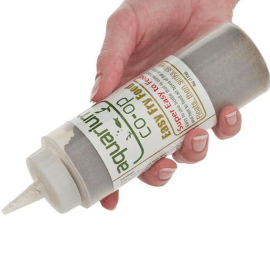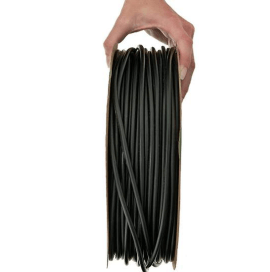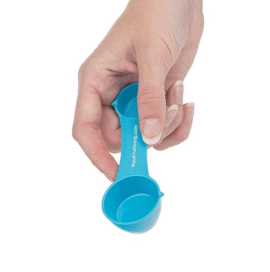How to Treat Livebearer Disease
Livebearer disease is a catch-all term used to describe many disorders that commonly affect livebearers (or fish that bear live young). These different ailments can include the shimmies, wasting disease, body fungus, and more. The first step is to properly diagnose your fish and then treat for their specific type of livebearer disease.
Why Are So Many Diseases Called “Livebearer Disease”?
Livebearers are frequently raised in hard water or brackish environments (see this article for more details), and when they get brought into our fully freshwater aquariums, their bodies start to crash, their immune systems become compromised, and it’s easier for pathogens to attack. Many times, people unknowingly buy a very stressed out group of livebearers who catch the next illness that comes along and wipes out all the fish in their tanks. This outbreak often gets labeled generically as “livebearer disease” because we hobbyists are not adept at identifying fish illnesses. There exist thousands of fish disorders in nature, but most likely your livebearer has fin rot, internal worms, fungus, or another commonplace disease. To prevent the spread of such infections, we highly recommend quarantining all fish that enter your home, feeding them high-quality foods to boost their health, and treating them with preventative medications (like vaccinating a new puppy).
Because of the health issues that new livebearers regularly face, we consulted with ichthyologists and extensively tested a wide spread of fish medications to find the best ones to cure bacterial, fungal, and parasitic infections. Based on our research, we narrowed down the search to three broad-spectrum medications – Mardel Maracyn, Aquarium Solutions Ich-X, and Fritz ParaCleanse. Our fish store has received thousands of fish over the years, and every fish gets treated with this trio of quarantine medications to ensure they have a clean bill of health. Read this article on how to use these medications to proactively treat your fish at home.

Trio of quarantine medications
Shimmies, Shimmying, or Molly Disease
Shimmying is a symptom often seen in mollies and other livebearers where the fish rocks its body from side to side in a snake-like slithering motion. The shimmies can be caused by:
- Low temperatures where the fish may be “shivering” to get warmer
- Low pH where the fish’s skin is burning from the acidic water
- Low mineral levels where the fish’s kidneys and other organs start shutting down
The last reason is one of the most common problems, since as mentioned previously, most farm-raised livebearers are cultured in hard water or brackish water environments. Therefore, the conventional wisdom for the past 30 to 40 years has been to add salt to treat shimmying in livebearers and African cichlids. “Livebearer salt” not only contains sodium chloride salt (e.g., regular table salt and aquarium salt), but also a mixture of calcium, magnesium, electrolytes, and other minerals that are essential for healthy biological functions. However, one of the main reasons why we don’t always recommend salt is because it can harm plants and snails at higher concentrations.

Mollies are prone to shimmying if they were originally raised in brackish (partly freshwater and partly saltwater) environments.
If your livebearer is shimmying, provide the optimal living conditions with higher pH levels from 7.0 to 8.0, warmer temperatures between 76° and 80°F, and increased mineral content. If you have soft water, minerals can be easily added with supplements such crushed coral, Wonder Shell, and Seachem Equilibrium. If your tap water is extremely hard, simply doing more frequent, partial water changes may be enough to bring additional minerals into the aquarium. Just remember that the fish you bought may have been sitting at the wholesaler and fish store for a long time in fresh water with no minerals. Therefore, it may not be possible to save the fish if the damage was already done and it wasn’t treated quickly enough.
Wasting Disease or Skinny Disease
A typical example of wasting disease looks like this: you buy 20 fish and a month later, five of them look very skinny while the rest are acting fine. Eventually those five fish pass away, and then a couple of months later, you notice five more fish are getting thinner and are also starting to die one by one. This type of livebearer disease is usually caused by internal parasites, such as tapeworms or camallanus red worms. The parasites steal nutrients from the fish’s body, causing weight loss and organ damage in the long term.
Tapeworms infest a fish’s digestive system and can cause intestinal blockages. Some symptoms include stringy poop and weight loss, but the disease can be hard to accurately diagnose without examining the feces under a microscope. That’s why we recommend that every fish gets a preventative treatment of ParaCleanse, which contains an antiparasitic drug called metronidazole and a dewormer called praziquantel. Two to three weeks after the initial treatment, you should use another round of ParaCleanse to ensure that all newly hatched eggs are also eliminated.

Tapeworms can be difficult to identify unless you use a microscope to examine the fish's waste.
If ParaCleanse does not stop the wasting disease, you may need to try another kind of dewormer. Fritz Expel-P is very effective for treating roundworms, camallanus red worms, hookworms, and even planaria in your aquarium. While most internal parasites are invisible to the naked eye, camallanus worms are easier to spot since you can visually see small, red worms sticking out of the fish’s anus. Medications like Expel-P that contain the active ingredient of levamisole or flubendazole work by paralyzing the adult worms so that they can be expelled by the fish and removed using an aquarium siphon. Two to three weeks after the initial treatment, dose the tank again with the dewormer to deal with any remaining parasites.
Worms are particularly easy to spread because their eggs are passed through fish waste and livebearers are excellent scavengers that tend to consume infected feces. While worms also affect other species like angelfish, they usually don’t kill them because the parasites are so tiny in comparison to the large cichlids. However, when a guppy or other small livebearer gets infected, they are much smaller in size, and it only takes a few worms to wreak havoc on their health.
How to Prevent Livebearer Disease
Prevention is key to your fish’s health, so if you plan on getting new livebearers, follow these simple guidelines:
- Provide the proper water parameters with a pH of 7.0 or higher and lots of minerals in the aquarium. Use crushed coral, Wonder Shell, or Equilibrium to help boost your mineral levels if needed.
- Put all new fish in a quarantine tank for a few weeks to observe for signs of illness and to prevent an outbreak from spreading to your display tank. Consider treating them with the trio of quarantine medications to prevent the most common diseases.
- While the fish are in quarantine, provide a low-stress environment to help them recover from their travels and rebuild their immune systems. Keep them away from any aggressive tank mates, and feed them plenty of good food.
If your fish display a different set of symptoms and you don’t believe they have livebearer disease, check out our articles on other fish illnesses with detailed instructions to help you:




